History
Bappa Rawal – Legendry Hero and Founder of Rawalpindi
Published
3 years agoon
By
Vedic Tribe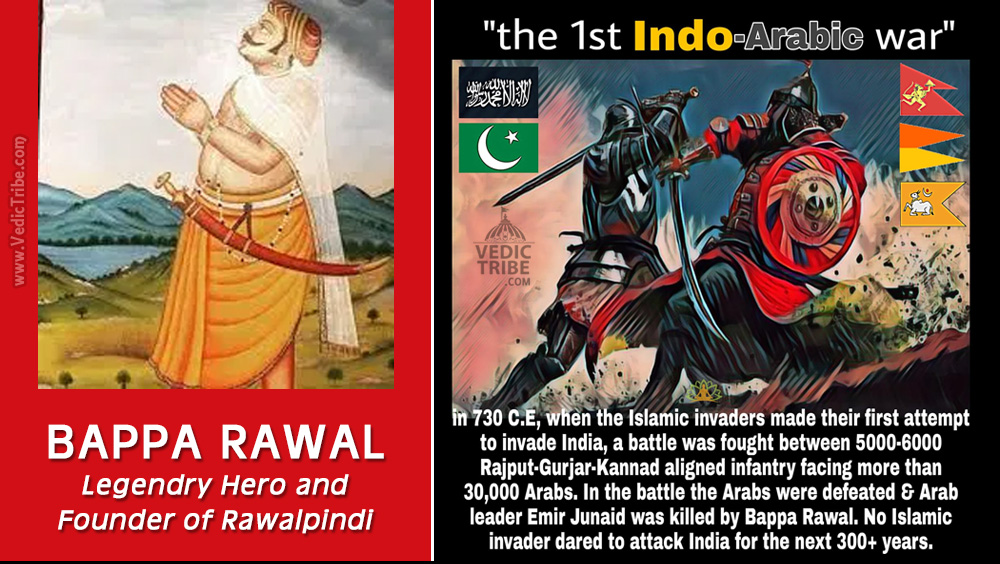
Indian fake historians until now remained silent about what happened to north western frontier of India between 8th to 12th Century nearly 400 years, after the fall of Raja Dahir another great Hindu King of Sindh who lost his battle against Arab in 712 AD. The valor and legend of Bappa Rawal the King of Mewar reveals the true history.
Bappa Rawal, (8th century) was a celebrated King of Mewar region in Rajasthan. He is identified as having predecessors of present days Gahlot, Sisodia, Kalabhoj, Shiladitya and Khumana who ruled Mewar during different phases of time.
References of Bappa Rawal are also available in ancient historical sources like 15th century Ekalinga mahatmya (Also known as Ekalinga Purana), Indologist David Gordon White`s work and 11th century writer Al- Baruni.
It has been agreed upon that Bappa Rawal whose original name was Raja Kalbhoj established the Mewar Kingdom and famous Eklingiji Temple in 728 CE.
Bappa Rawal as popularly called for his greatness and reverence created a confederacy of warriors along with Pratihar King Nagbhata 1st, Bhils and Nagas and decimated the Malechha Arabs and captured the Chittor Fort. They decimated and chased the Arab Mohammad bin Qasim’s army into the deep desert beyond Ghazni.
Bappa Rawal in a sense had broken the myth that Indian Kings could not unite against foreign invaders to protect the mother land. The fake narrative to divide and derecognize them has been in history books for too long. The ferocity and bravery of Bappa Rawal was so astounding that subjects offered him name of reverence Bappa.
King Bappa Rawal Jee was a visionary Commander. He comprehended immediately that invader are not be decimated within the borders of India alone but to be demolished in their homeland as well. Bappa Rawal did not have the word forgiveness in his dictionary.
True to his ferocity and military power, he collated and commandeered another confederation of Jaisalmer and Jodhpur kingdom and chased Arabs out of Afghanistan in his maiden effort. The brute power of Confederation was unimaginable. Most of the Arab were killed in this battle.

To strengthen the north western frontier, Bappa Rawal built a city named Rawalpindi still surviving after his name. The city was strategically located and hence made his military garrison.
After strengthening the post of Rawalpindi, Bappa Rawal led 16 valiant forays into Ghazni (Afghanistan) and subjugated entire Ghazni and expanded the kingdom of Mewar boundary up to Iran.
Along and beyond Gujarat, Bappa Jee ran through present Sindh and Baluchistan and freed the entire area from single trace of malechha (Arabs). Such was the power and fear of Mewar in those days that the entire north western frontier was in total command and administered from Mewar only.
It is an illusion for today’s learner and fake historian who coined a thought that Afghani were warrior and not defeated. But the fact scores of Indian Kings from Bappa Rawal Jee, King Lalitaditya and Sardar Hari Singh Nalwa an army General of Great Ranjit Singh defeated subjugated and ruled this Ghazni for quite a long period.
Bappa Rawal had proved his military statesmanship on a vast geographical area deep into central Asia as well. His successful military expedition into Sindh, Baluchistan, Ghazni, Kandahar Khorasan, Turan, Isfahan and in Iran established him as one of the greatest King of contemporary world political map.
The fake myth as taught to the impressionable young mind, that Indian warriors not invaded and controlled North West also stands demolished when we read his successful military expedition.
Such was the terror of Mewar kingdom in those days that Arab forgot the prosperous land of India for any successful military expedition for next 400 years. He introduced coins of Gold to commemorate the establishment of Mewar Kingdom. Later on, among his great descendent, Rana Sanga (Rana Sangram Singh), Maharana Pratap and Rana Uday Singh were the other great Warrior and king of India.
Bappa Rawal Jee who assumed the honor of savior of Chittour at the mere age of 20 finally ruled for next 30 year. He took to spiritual path thereafter and submerged himself into the devotion of Lord Shiv in 753 AD.
.
You may like
-


Seven Vows and Steps (pheras) of Hindu Wedding explained
-


Sari or Saree is symbol of Indian feminism and culture
-


Atithi Devo Bhava meaning in Hinduism and India
-


Navaratri: The Nine Divine Nights of Maa Durga!
-


Significance of Bilva Leaf – Why is it dear to Lord shiva?
-


Concept of Time and Creation (‘Brahma Srishti’) in Padma Purana
History
Snakes and Ladders, Originated in Ancient India called Mokshapat or Moksha Patamu
Published
3 years agoon
January 21, 2021By
Vedic Tribe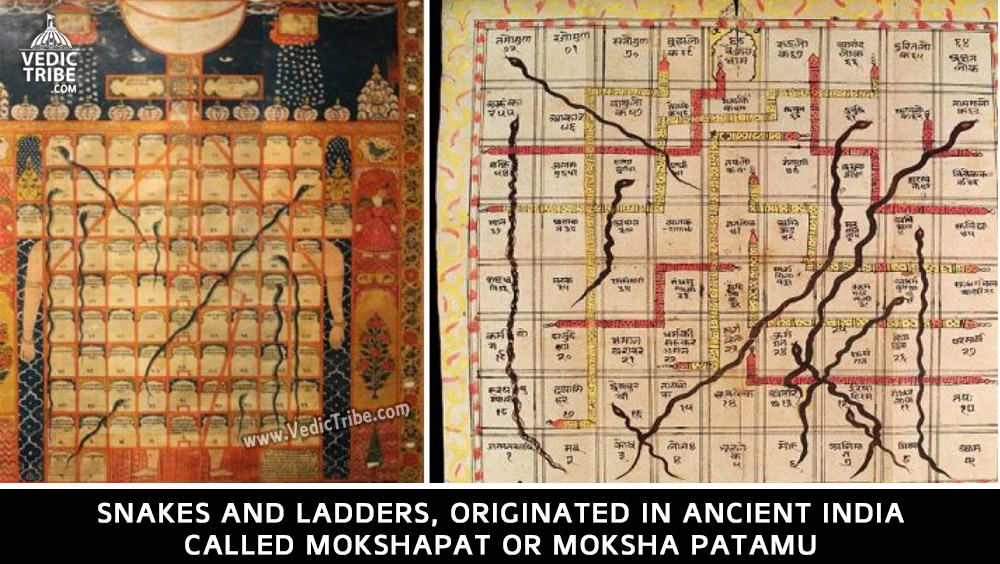
The board game, today called Snakes and Ladders, originated in ancient India, where it was known with the name Mokshapat or Moksha Patamu.
It’s not exactly known when or who invented it, though it’s believed the game was played at a time as early as 2nd century BC. According to some historians, the game was invented by Saint Gyandev.
Originally, the game was used as a part of moral instruction to children. The squares in which ladders start were each supposed to stand for a virtue, and those housing the head of a snake were supposed to stand for an evil. The snakes outnumbered the ladders in the original Hindu game. The game was transported to England by the colonial rulers in the latter part of the 19th century, with some modifications.
Through its several modifications over the decades, however, the meaning of the game has remained the same — ‘that good deeds will take people to heaven (Moksha) while evil deeds will lead to a cycle of rebirths in lower form of life (Patamu).
The modified game was named Snakes and Ladders and stripped of its moral and religious aspects and the number of ladders and snakes were equalized. In 1943, the game was introduced in the US under the name Chutes and Ladders.
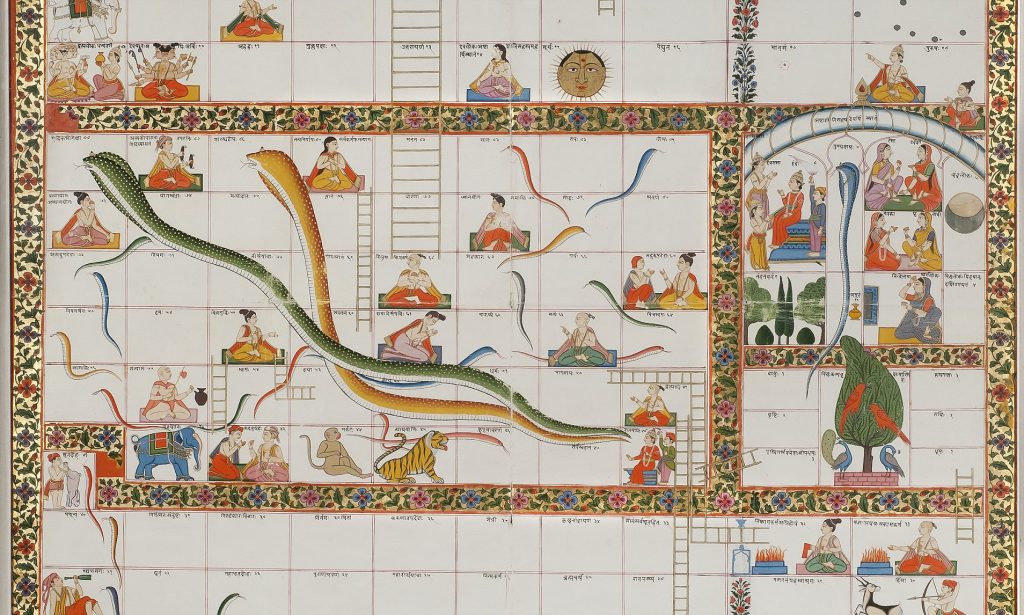
The Game of Knowledge
Originally, the game of Snakes and Ladders was known variously as Gyan Chaupar (meaning ‘Game of Knowledge), Mokshapat, and Moksha Patamu, and was originally a Hindu game. Nobody knows for sure as to who invented this game, or when it was created.
It may be said that whilst the gameplay of Gyan Chaupar is the same as today’s Snakes and Ladders, the board and higher objective of the game may be said to be quite different. Like the modern Snakes and Ladders board, the number of squares in that of Gyan Chaupar may vary. One version of this board, for instance, contains 72 squares, whilst another has 100. A major difference between the traditional and modern versions is the fact that in the former, a virtue or a vice and the effects of these virtues and vices, or something neutral is placed within each box.
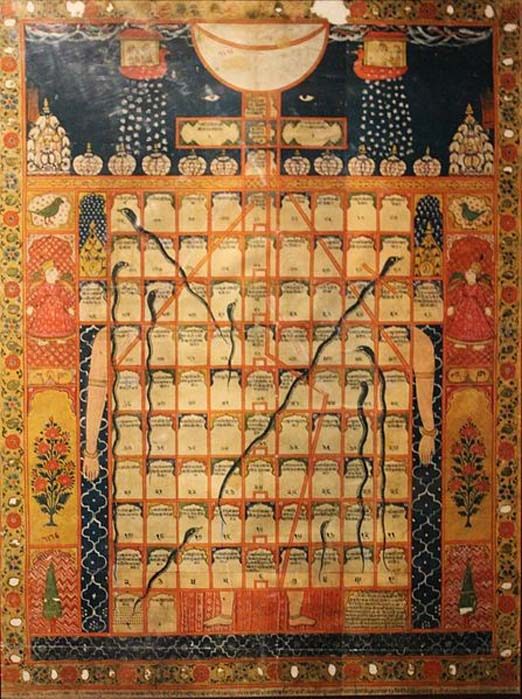
For instance, in an Indian Gyan Chaupar board of 72 boxes, squares number 24, 44, and 55 have the vices of bad company, false knowledge, and ego respectively. As the game places great emphasis on karma, the Hindu principle of cause and effect, each vice (the snakes’ heads) has a corresponding effect. Thus, for the vices mentioned above, the corresponding effects are conceit or vanity, plane of sensuality, and illusion. On the other hand, the virtues of purification, true faith, and conscience are contained in squares number 10, 28, and 46, and these lead to heavenly plane, plane of truth, and happiness respectively. In this version of the board, the goal is to reach box number 68, which is the plane of Shiva.
Religious Teaching Tool
This game was so popular that it was also adopted and adapted by other religions that existed in the Indian subcontinent. It is known that Jain, Buddhist, and Muslim adaptations of the game exist, as the concepts of cause and effect, and reward and punishment, are common to them. For devout followers of these religions, the game may be played as a form of meditation, as a communal exercise, and even as part of one’s religious studies without the use of more conventional books or sermons.
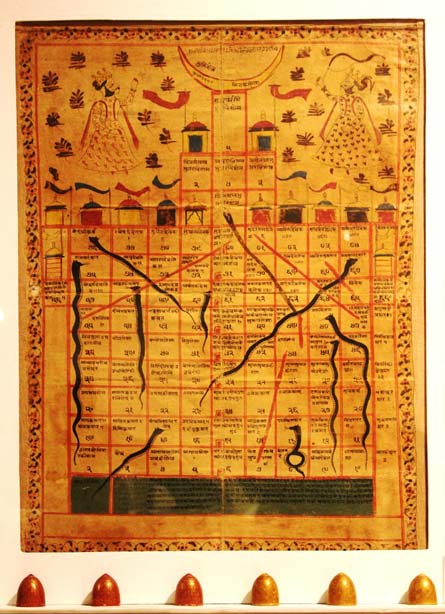
It may be added that many of the surviving game boards are works of art in their own right, as they contain elaborate illustrations of human figures, architecture, flora and fauna, etc. These boards were commonly made of painted cloth, and most of the extant ones date from after the middle of the18th century AD.
The Modern Game
The game of Gyan Chaupar became Snakes and Ladders towards the end of the 19 th century, when it was introduced to Great Britain by India’s colonial rulers. Whilst the original gameplay was maintained, its underlying philosophical message was greatly diminished. The religious virtues and vices were replaced by two-part cartoon dramas connected either by a snake or a ladder. Additionally, the number of snakes and ladders were equalized, whilst in the original ones, there were usually more snakes than ladders, which symbolizes the belief that it is far easier to fall prey to vice than to uphold virtue. From Great Britain, the game traveled to the United States, where it was introduced in 1943 by Milton Bradley as Chutes and Ladders.
Bharat
Telhara University – Older than Nalanda, Vikramshila Universities
Published
3 years agoon
December 29, 2020By
Vedic Tribe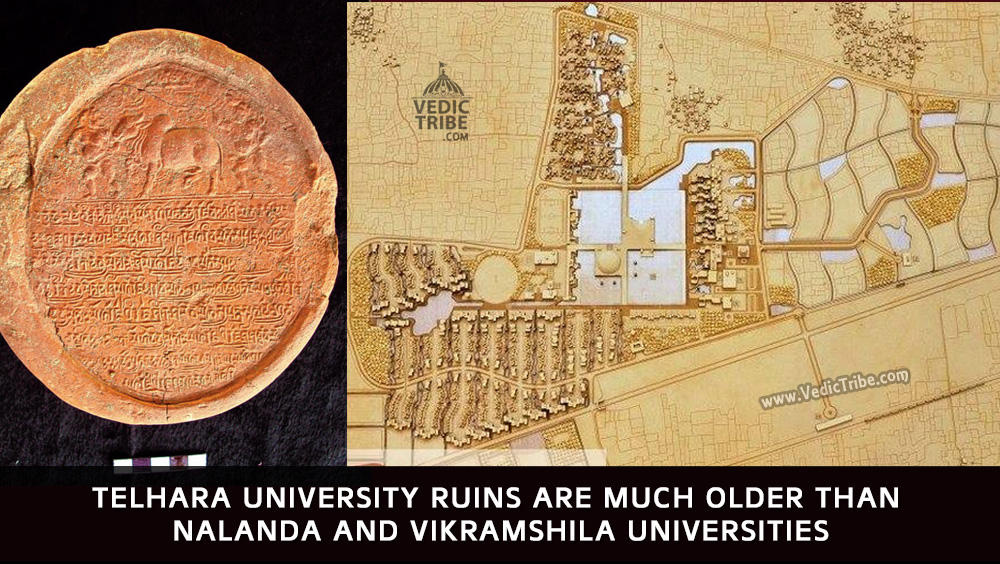
It was a useful mound, no doubt. A good vantage point where villagers occasionally relieved themselves.
But who would have thought that deep beneath its golden brown earth would be stories of dynasties and empires that now suggest that this — Telhara, a village 33 km from the ruins of the more famous Nalanda University — could be ‘Tilas-akiya’ or ‘Tiladhak’, the place Chinese traveler Hiuen Tsang visited and wrote about during his travels through India in 7th century AD? So far, there were only vague references but recent excavations at the mound suggest that Telhara was indeed an ancient university or seat of learning with seven monasteries.
The Bihar government has been calling the Telhara project one of its biggest after the excavations that unearthed Nalanda and Vikramshila universities. The excavation at Telhara should have happened earlier, say experts, but the site lost out to the more famous Nalanda.
The Telhara project that started on December 26, 2009, has so far come across over 1,000 priceless finds from 30-odd trenches — seals and sealing, red sandstone, black stone or blue basalt statues of Buddha and several Hindu deities, miniature bronze and terracotta stupas and statues and figurines that go back to the Gupta (320-550 AD) and Pala (750-1174 AD) empires. But the 2.6-acre mound has now thrown up the most tantalising find yet — evidence of a three-storied structure, prayer hall and a platform to seat over 1,000 monks or students of Mahayana Buddhism.
The terracotta monastery seals — a chakra flanked by two deers — unearthed at Telhara are similar to those at Nalanda, suggesting Telhara or Tiladhak was another great seat of learning besides Nalanda and Odantpuri during the Gupta and Pala reigns. It was the discovery of a similar monastery seal that clinched it for Nalanda University.
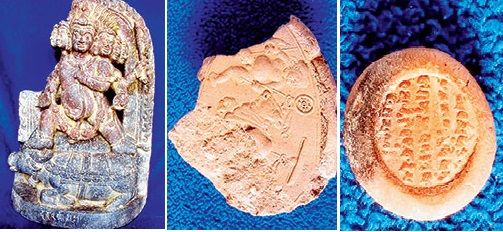
Former Archaeological Survey of India director B S Verma, who between 1971 and ’81 supervised the excavation at the site of the ancient Vikramshila university, says, “Telhara or Tiladhak has much more convincing epigraphical proofs — monastery inscriptions — than Vikramshila. The findings that match Hiuen Tsang’s account do more to convince that the place was a university or mahavihara similar to Nalanda.”
In his book, The Antiquarian Remains in Bihar, historian D R Patil writes about Hiuen Tsang’s description of Telhara. “Hiuen Tsang describes Telhara or Tilas-akiya as containing a number of monasteries or viharas, about seven in number, accommodating about 1,000 monks studying in Mahayan. These buildings, he says, had courtyards, three-storied pavilions, towers, gates and were crowned by cupolas with hanging bells. The doors and windows, pillars and beams have bas relieves (sculptures in guilded copper). In the middle vihara is a statue of Tara Bodhisatva and to the right (is) one of Avlokiteshwar”.
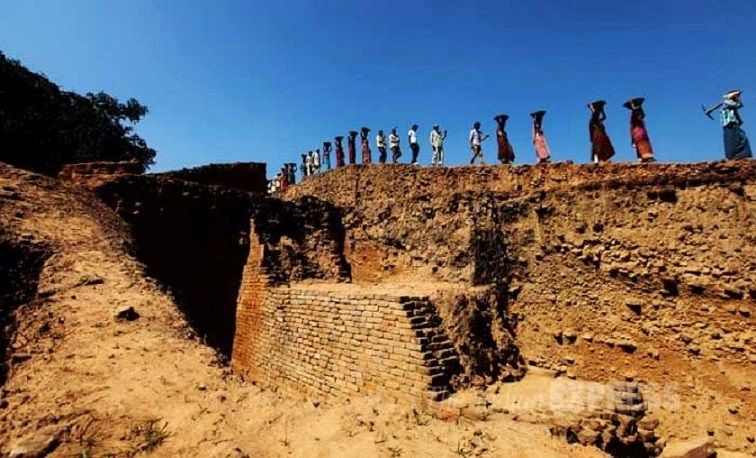
Other history books too talk of Tiladhak monastery, on the western side of Nalanda, as having four big halls and three staircases. It is said the mahavihara or university was built by one of the descendants of Magadha ruler Bimbisara. The monastery was decorated with copper and also had small copper bells that gently chimed in the breeze.
For months now, the excavation has been unearthing these stories. Apart from the mound that is now being dug up, Telhara has six other mounds — five of which have settlements and one which is partially elevated.
Atul Kumar Verma, director (archaeology) of the Bihar government’s Department of Art and Culture, says, “Since the excavations suggest that Telhara might have been a contemporary of Nalanda, it is quite possible that it was either an independent university for specialized education or that students graduating from Nalanda University would come here for specialized study. It is a great feeling to see the place emerging as the next big find after Nalanda. It has also aroused great curiosity and attracted even the likes of Nobel laureate Amartya Sen.” Sen wrote in the visitors’ book: “What a wonderful site, really thrilling! And so skillfully excavated and restored.”
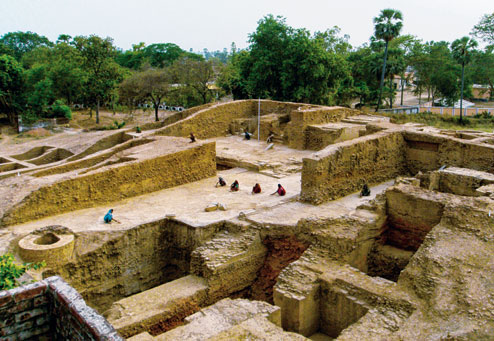
“We have found the courtyard that might have been an extension of the platform Hiuen Tsang had described,” Nand Gopal, camp in-charge at the Telhara site, says, peering into his optical line meter that’s mounted on a tripod.
In more recent times, it was A M Broadley, then magistrate of Nalanda, who in 1872 wrote about “Tilas-akiya” as a university and site of learning. British army officer and archaeologist Sir Alexander Cunningham, who visited the place between 1872 and 1878, wrote about inscriptions describing “Teliyadhak” as a place that had seven monasteries and which matched Hiuen Tsang’s account. A statue of the 12-armed Avlokiteshwar Buddha found from a Tiladhak site is at the Indian Museum in Kolkata. Perhaps the best known Pala sculpture from Telhara is now in Rietberg Muzeum, Zurich.
Though there was this and more proof that Telhara could be sitting on a glorious past, it wasn’t until December 2009 that the excavations finally began. Telhara panchayat head Awadhesh Gupta claims to have been the one who got things started.
“We all knew Telhara was once a great seat of learning, but nobody did anything to prove it. In 1995, I approached the Congress government requesting that the place be excavated but got no assurance. When Bihar Chief Minister Nitish Kumar visited the site in 2007, I put up this demand once again. The villagers were not happy with me. They thought I should have demanded something more concrete than just the digging of a mound.”
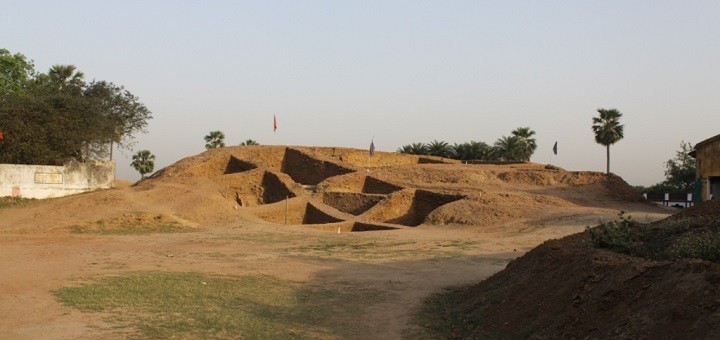
But the mukhiya may have had the last laugh. Villagers now talk about Telhara being part of the Nalanda-Rajgir circuit and how that could bring them jobs and better opportunities. “We hope the site is conserved and clubbed with Nalanda to attract tourists. The site has already given temporary jobs to 70 villagers,” says Anil Kumar, a villager.
It was a useful mound, no doubt.
Experts associated with its excavation are now claiming that the university originated in the Kushan period.
Atul Kumar Verma said that in the recent excavation, archaeologists have found some bricks of very large size (42x36x6.5cm) substantiating that the university belonged to the Kushan period. “Bricks of the Kushan period were quite large from other dynasties, including the Gupta and Pala periods,” said Verma.
While the Kushan period is considered to be 1st century AD, the Gupta dynasty ruled from 3rd to 6th century AD.
MAJOR FINDINGS
SEALS AND SEALING
The recovery of over 100 terracotta seals and sealings from the Gupta and Pala periods provides strong evidence of this being a Buddhist university. Besides seals of the chakra flanked by two deers, other seals have inscription of Buddhist mantras. Seals of Gaj-Lakshmi and flying birds were also found. Some inscriptions that have not yet been deciphered would be sent to Mysore for deciphering.
PLATFORM, TEMPLES
Just above the ashen layer — said to be proof of Turkish general Bakhtiyar Khilji having destroyed the monastery — is the sanctum sanctorum of three Buddhist shrines, each measuring 3.15 square metres. A big platform, found just below this ashen layer, is said to have accommodated over 1,000 monks.
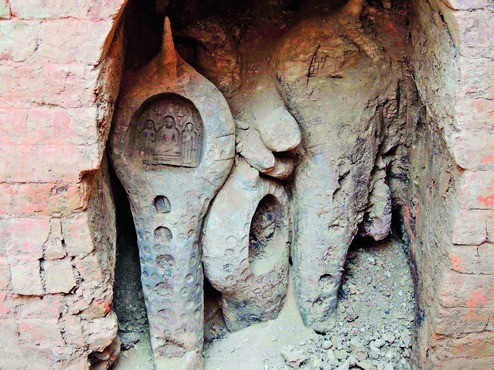
CELLS FOR TEACHERS
The excavation has so far revealed 11 cells of 4 square meters each. It is believed that these were faculty quarters. There is evidence of bricks from the Gupta and Pala periods.
COPPER BELL CHIMES
The excavation revealed several broken pieces of small bells. Parts of molten copper also suggest that the monastery was well-decorated.
CAUTION INSCRIPTION
A stone inscription in Sanskrit (early Nagari script), probably written just before the destruction of the Tiladhak mahavihara, says, “He who tries to destroy this monastery is either a donkey or a bull”. Below the stone inscription are images of the two animals.
FASTING BUDDHA AND VOTIVE STUPA
A miniature terracotta image of a fasting Buddha from the Pala period is a rare find. A six-foot-tall votive stupa from the Pala period suggests the prevalence of Buddhism.
MAURYAN PERIOD
Bone tools and pottery shards of Northern Black Polished Ware points to this being a settlement in the Mauryan period.
STONE SCULPTURES
Among the over 15 stone sculptures found at the site are a red sandstone sculpture of Bodhisatva, Avlokiteshwar, Manjusri and the Buddha in his ‘earth witness’ mudra. A black stone statue of Buddha in abhay mudra (fearless mode) from the Pala period has been found. The red sandstone Bodhisatva sculpture is believed to be from the Gupta period. Some sculptures of Hindu deities such as Uma Maheshwar and Ganesh and Vishnu from the later Pala period were also found. The presence of a Yamantaka sculpture is evidence of Tantric Buddhism at the monastery.
History
India’s first Islamic Mausoleum Was Built on Top of Ancient Hindu Temple
Published
3 years agoon
December 28, 2020By
Vedic Tribe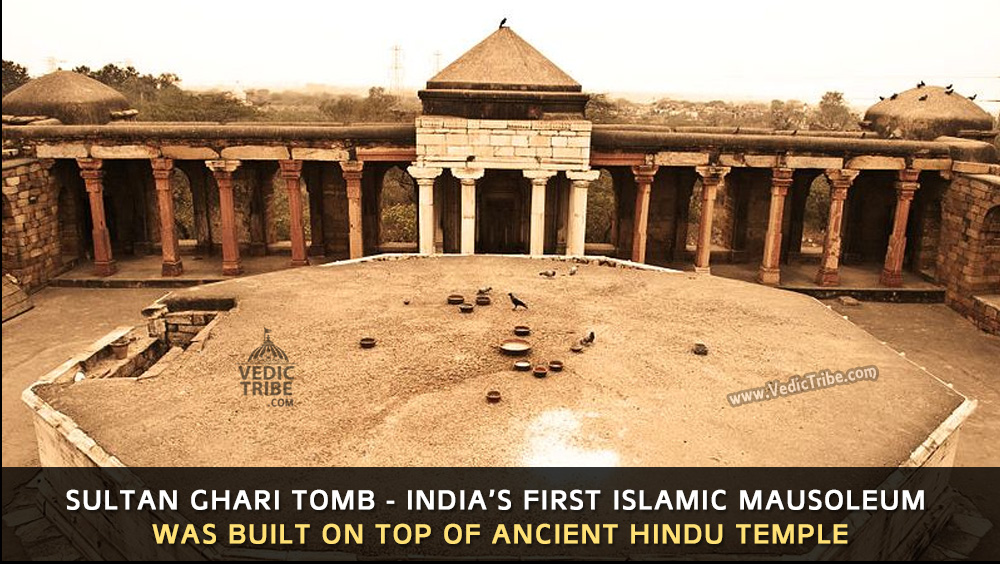
About 6 km west of Qutab Minar in Delhi, there lies a tomb called Sultan Ghari which is believed to be the final resting place of Prince Nasir’ud-Din Mahmud, the uncrowned eldest son of Sultan Shamsuddin Iltutmish of the Slave Dynasty built in 1231 AD. It was the first Islamic Mausoleum built in India.
However, engraved symbols of animals, Shiva Linga and the Sanskrit inscriptions on ceiling tell a different tale altogether. The beams of the octagonal crypt bear figures of Kamadhenu, the celestial cow and Varaha, the wild boar reincarnation of Lord Vishnu. These two animals were a royal Hindu insignia and considering the ideology of Islam against idols and the immense hatred towards pigs, it is very unlikely that such statues would adorn the inside of a Muslim tomb.
![]()
Iltutmish invaded eastern part of India in 1225 AD which resulted in signing of a treaty between him and Iwaz Khalji, the ruler of Eastern India. After a few successive battles, Prince Nasiru’d-Din Mahmud was appointed governor of Lakhnauti province who later merged the province of Oudh with Bengal and Bihar, gaining him the title of “Malik-us-Sharq” (King of the East) by his father.
The Prince was killed in 1229 AD after a very short rule of 18 months. Grieved by the death of his favourite son, Iltutmish commissioned the Sultan Ghari Tomb. After Iltutmish’s death in 1236, his daughter, Razia Sultana ruled the kingdom until her defeat and death in 1240 AD.
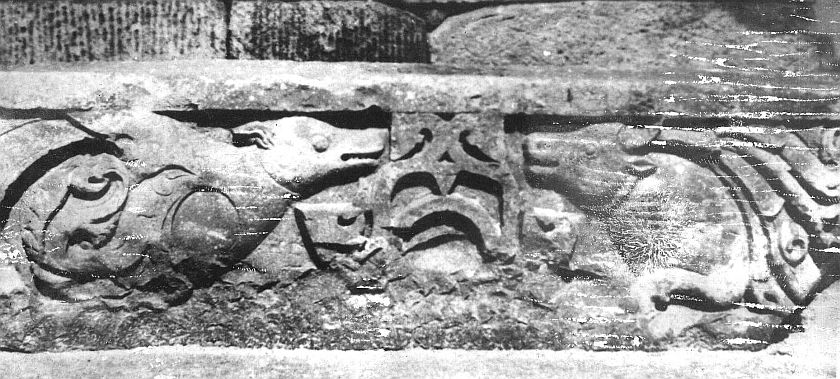
While ASI is pretty much silent on this matter, historians and archaeologists justify these carvings as new buildings being fashioned out of the debris of some Hindu buildings or that the workmen may have been Hindus and would have built the tomb in Hindu style. Their arguments in favor of the tomb fail here because no building worth its name can be build out of old debris and no workman would even dare to fashion a building for which he is hired according to his taste rather than that of the owner’s.
The building is also of an octagonal shape which is another Hindu specialty.
Due to indifference or perhaps purposeful negligence by the government and ASI, we may never know the reality and history of this ancient Hindu temple.

Follow us on Facebook
Follow us on Twitter
Latest


Seven Vows and Steps (pheras) of Hindu Wedding explained
Views: 5,479 Indian marriages are well renowned around the world for all the rituals and events forming part of the...


Sari or Saree is symbol of Indian feminism and culture
Views: 4,676 One of the most sensual attires of a woman in India is undoubtedly the sari. It is a...


Atithi Devo Bhava meaning in Hinduism and India
Views: 4,013 Atithi Devo Bhava, an ancient line taken from the Hindu scriptures and was originally coined to depict a visiting person whose...


Sanskrit Is More Than Just A Method To Communicate
Views: 3,246 -By Ojaswita Krishnaa Chaturvedi anskrit is the language of ancient India, the earliest compilation of sound, syllables and...


Significance of Baisakhi / Vaisakhi
Views: 4,291 Baiskhi is also spelled ‘Vaisakhi’, and is a vibrant Festival considered to be an extremely important festival in...


Navaratri: The Nine Divine Nights of Maa Durga!
Views: 5,216 – Shri Gyan Rajhans Navratri or the nine holy days are auspicious days of the lunar calendar according...


History of Vastu Shastra
Views: 7,385 Vastu Shastra (or short just Vastu) is the Indian science of space and architecture and how we may...


Significance of Bilva Leaf – Why is it dear to Lord shiva?
Views: 6,591 – Arun Gopinath Hindus believe that the knowledge of medicinal plants is older than history itself, that it...


Concept of Time and Creation (‘Brahma Srishti’) in Padma Purana
Views: 7,710 Pulastya Maha Muni affirmed to Bhishma that Brahma was Narayana Himself and that in reality he was Eternal....


Karma Yoga – Yog Through Selfless Actions
Views: 7,367 Karma Yoga is Meditation in Action: “Karma” means action and “yoga” means loving unity of our mind with...
Tags
Trending Now
-

 Bhartiya Culture2 years ago
Bhartiya Culture2 years agoSeven Vows and Steps (pheras) of Hindu Wedding explained
-

 Bhartiya Culture2 years ago
Bhartiya Culture2 years agoSari or Saree is symbol of Indian feminism and culture
-

 Bhartiya Culture2 years ago
Bhartiya Culture2 years agoAtithi Devo Bhava meaning in Hinduism and India
-

 Bhartiya Culture2 years ago
Bhartiya Culture2 years agoSanskrit Is More Than Just A Method To Communicate

